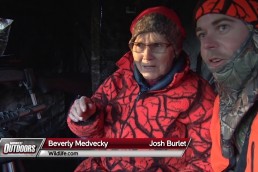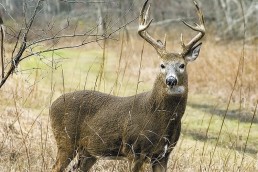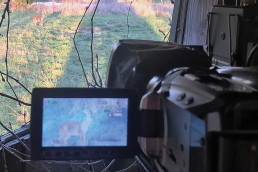Another Year, Another Deer and the Proximity Principle
SHARE THIS POST
Well, I’ve made it through another year—bow season is finally here. That’s how I gauge my progress into old age. I don’t exactly live for bowhunting, but the opener is a bigger deal than even my birthday now. I’ve devoted my entire life to the outdoors, and writing about it on a regular basis has prompted me to investigate every aspect of the associated pastimes.
Bowhunting is the most challenging and rewarding of all.
I have many reasons for feeling that way, but the most important is what I call the “proximity principle.” The limitations of equipment demands that I invade this most elusive animal’s space to such a degree that nothing else in the world exists, except the animal and me.
I still occasionally get what hunters refer to as “buck fever,” and it doesn’t take a big one to bring it on. And if a doe I plan to eat approaches me in such a way that it causes me to come to full-draw two or three times, by the time it is in the open and in my face I become unnerved. If they happen upon me in a sudden manner, even a good buck doesn’t affect me much. I just draw and shoot without giving it much thought. However, in those situations, I seem to do any shaking afterward.
With bowhunting, there are dozens of things that can go wrong—and some of them usually do before a deer offers an open shot at 20 yards. The longer they take to get within range, the more these problems can come to mind, and then there’s more time for the animal to make each one a reality.
I’m not really sure how much time we’re talking about here. Bowhunting requires long hours sitting in a tree, with absolutely nothing happening. To be honest, it can get pretty boring, and when the forest is dry and sounds are loud, I’ve been known to just read a book while I wait, pausing every page or so to look around.
But all of a sudden, a deer comes into view and everything instantly jumps. I don’t really know how long it takes to make me shake, because during those times when nothing in the world exists except the deer and me, I lose all sense of time too, but the memories last a lifetime.
I have the utmost respect for a whitetail’s acute senses and their elusive survival instincts. And, over the years, I’ve been chided by macho blowhards about suffering from these occasional bouts of “buck fever.” Besides making me feel like I’m back in high school, it makes me wonder why these guys still hunt? If there ever comes a time where at least my hand doesn’t tremble when a deer is so near—and matters of life and death are in the balance—I’ll quit.
Are you enjoying this post?
You can be among the first to get the latest info on where to go, what to use and how to use it!
The bow I use may be a modern compound, but my approach to the hunt is the same as it was for those who used the most primitive versions of this weapon. My bow now may be easier to use, the arrow may fly faster, and may be more accurate, but I still have to get exceptionally close to make it work.
I remember reading many years ago how Native Americans would kneel next to the deer they downed and offer up thanks to the departing spirit of the animal for providing them substance. These rugged men were consummate hunters who lived off the land, yet their experienced philosophy toward the whole thing was not that they were necessarily great hunters, but that the spirit of the animal was somehow ready to sacrifice its earthly form so that they might live.
I may not agree with that version of the metaphysical, but I do know that with a bow, when the moment of truth is at hand and that elusive animal is only a few yards away and things can and do go wrong, something much grander than me is in play.
You might simply call it an element of luck. I don’t know—I just feel lucky to have another year, another chance at a deer and the proximity principle.
Ron Kruger has been communicating the outdoor experience for over four decades. He has worked as a full-time guide for trout on the North Fork, for crappies and bass on Kentucky Lake and for smallmouths on the Current River. He has served as editor of three outdoor magazines, and owns a patent on a fly/lure called the Desperate Diver.
MWO
SHARE THIS POST
Did you enjoy this post?
You can be among the first to get the latest info on where to go, what to use and how to use it!
Ron Kruger
Ron Kruger has been communicating the outdoor experience for more than four decades. He has worked as a full-time guide for trout on the North Fork, for crappies and bass on Kentucky Lake and for smallmouths on the Current River. He has served as editor of three outdoor magazines, and owns a patent on a fly/lure called the Desperate Diver.



